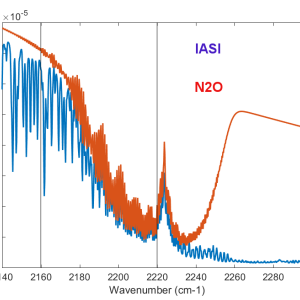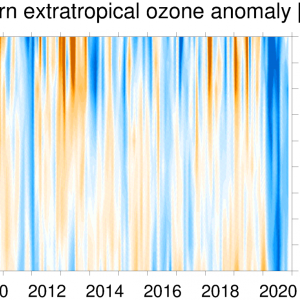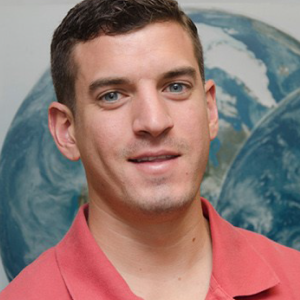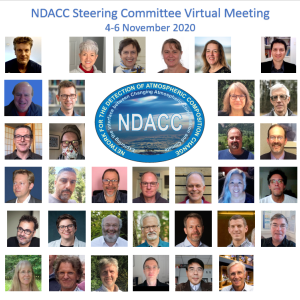Updates and corrections to the GMI chemical mechanism and its input files have been used to create a new Hindcast simulation with MERRA2 meteorology. The changes compared to the previous GMI simulation are generally small and you probably won’t see any large impacts on chemical constituents.
News and Events
Nitrous oxide (N2O) is the third most important greenhouse gas (GHG) after carbon dioxide (CO2) and methane (CH4). Its global warming potential is about 300 times larger than CO2 for a 100 year timescale. Surface in-situ observations show that N2O is steadily rising since the 1970's.
Worldwide efforts to contain spreading of the COVID-19 pandemic have reduced emissions from surface traffic by about 15% on average over the year 2020. Air-traffic (and emissions) went down by 40% on average.
As previously announced, we currently are making plans to hold the 2021 NDACC Steering Committee meeting in College Park, MD, the week of 13–17 September 2021. With the ongoing restrictions associated with the COVID-19 pandemic, it remains unclear if we will be able to have a face-to-face meeting this year.
Congratulations to Dr. Ryan Stauffer for his appointment to a Civil Service position in the NASA Goddard Space Flight Center Atmospheric Chemistry and Dynamics Laboratory within the Earth Sciences Division! This appointment is effective 1 March 2021.
The NDACC Steering Committee held its annual meeting 4–6 November 2020. Originally scheduled to take place at the NOAA Center for Weather and Climate Prediction (NCWCP) in College Park, MD, the meeting was changed to a virtual format because of ongoing COVID-19 restrictions.
Total columns of the trace gases nitric acid (HNO3) and hydrogen chloride (HCl) are sensitive to variations in the lower stratospheric age of air (AoA), a quantity that describes transport timescales in the stratosphere.
The Cooperating Network Agreement between NDACC and the Pandonia Global Network (PGN) was finalized on 24 June 2020. As a result of this agreement, Barry Lefer (NASA Headquarters) and Angelika Dehn (also the ESA-ESRIN Representative) have been named PGN Co-Representatives to the NDACC Steering Committee.
There have been a number of changes to the NDACC Steering Committee, based on actions taken during the October 2019 NDACC Steering Committee meeting, as well as recent events.
The third SPARC/WMO Long-term Ozone Trends and Uncertainties in the Stratosphere (LOTUS) workshop originally planned for Helsinki was held virtually May 28–29, 2020.



